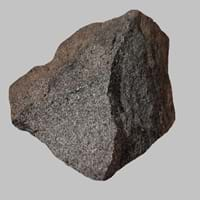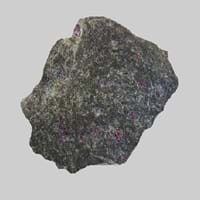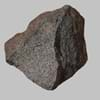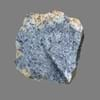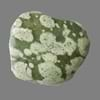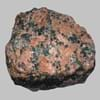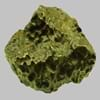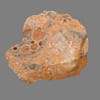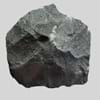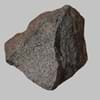Definition
Theralite is a plutonic hylocrystalline igneous rock consisting of augite, olivine, calcic plagioclase and nepheline
Peridotite is a dense, coarse-grained plutonic is the main constituent of the earth's mantle
Origin
Unknown
Pike County, U.S
Discoverer
Unknown
Unknown
Etymology
From Greek to pursue
From French, from peridot + -ite
Class
Igneous Rocks
Igneous Rocks
Sub-Class
Durable Rock, Hard Rock
Durable Rock, Medium Hardness Rock
Other Categories
Fine Grained Rock, Opaque Rock
Coarse Grained Rock, Opaque Rock
Texture
Phaneritic
Phaneritic
Color
Dark Grey to Black
Dark Greenish - Grey
Durability
Durable
Durable
Scratch Resistant
Yes
Yes
Appearance
Veined and Shiny
Rough and Shiny
Interior Uses
Decorative Aggregates, Flooring, Interior Decoration
Decorative Aggregates, Interior Decoration
Exterior Uses
As Building Stone, As Facing Stone, Garden Decoration, Office Buildings
As Building Stone, As Facing Stone, Garden Decoration
Other Architectural Uses
Curbing
Curbing
Construction Industry
As Dimension Stone, Building houses or walls, Cement Manufacture, Construction Aggregate, for Road Aggregate
As Dimension Stone, Cobblestones
Medical Industry
Not Yet Used
Not Yet Used
Antiquity Uses
Artifacts, Monuments, Sculpture
Monuments, Sculpture, Small Figurines
Commercial Uses
Cemetery Markers, Commemorative Tablets, Creating Artwork, Laboratory bench tops, Jewelry, Sea Defence, Tombstones
Creating Artwork, Gemstone, Jewelry, Source of Chromite, Platinum, Nickel and Garnet, Source of Diamonds
Types
Teschenite and Essexite
Dunite, Wehrlite, Harzburgite, Lherzolite and Pyrolite
Features
Smooth to touch
Constitutes upper part of the Earth's mantle, Generally rough to touch, Host rock for Diamond, Is one of the oldest rock
Archaeological Significance
Famous Monuments
Data Not Available
Data Not Available
Famous Sculptures
Data Not Available
Data Not Available
Pictographs
Not Used
Used
Petroglyphs
Not Used
Used
Formation
Theralite is a fine-grained, hard rock which is a type of metasomatite, essentially altered basalt. It forms with or without crystallization, either below the surface as intrusive rocks or on the surface as extrusive rocks.
Peridotites can be formed in two ways: as mantle rocks formed during the accretion and differentiation of the Earth or as cumulate rocks formed by precipitation of olivine and pyroxenes from basaltic magmas.
Mineral Content
Augite, Olivine, Plagioclase, Pyroxene
Amphibole, Chromite, Garnet, Magnesium, Olivine, Phlogopite, Plagioclase, Pyroxene
Compound Content
Aluminium Oxide, CaO, Chromium(III) Oxide, Iron(III) Oxide, Potassium Oxide, MgO, Sodium Oxide, Silicon Dioxide, Sulfur Trioxide
Ca, Fe, Mg, Potassium, Silicon Dioxide, Sodium, Titanium Dioxide
Types of Metamorphism
Cataclastic Metamorphism, Contact Metamorphism, Hydrothermal Metamorphism, Impact Metamorphism, Regional Metamorphism
Burial Metamorphism, Cataclastic Metamorphism, Contact Metamorphism, Hydrothermal Metamorphism, Impact Metamorphism, Regional Metamorphism
Types of Weathering
Biological Weathering
Biological Weathering, Chemical Weathering, Mechanical Weathering
Types of Erosion
Chemical Erosion, Coastal Erosion, Glacier Erosion, Water Erosion, Wind Erosion
Chemical Erosion
Grain Size
Fine Grained
Coarse Grained
Fracture
Uneven, Splintery or Conchoidal
Irregular
Porosity
Highly Porous
Less Porous
Luster
Waxy and Dull
Shiny
Compressive Strength
Not Available
Cleavage
Non-Existent
Imperfect
Specific Gravity
2.5-2.8
3-3.01
Transparency
Translucent to Opaque
Translucent to Opaque
Density
2.7 g/cm3
3.1-3.4 g/cm3
Resistance
Impact Resistant, Pressure Resistant, Wear Resistant
Heat Resistant, Pressure Resistant, Wear Resistant
Deposits in Eastern Continents
Asia
India, Russia
China, India, Indonesia, Kazakhstan, Russia, South Korea, Thailand, Turkey
Africa
South Africa
Morocco, South Africa
Europe
Germany, Greece, Italy, Scotland, Turkey
Finland, France, Georgia, Germany, Great Britain, Italy, Kazakhstan, Netherlands, Norway, Spain, Switzerland, Venezuela
Others
Greenland, Mid-Atlantic Ridge
Not Yet Found
Deposits in Western Continents
North America
Canada, USA
Canada, USA
South America
Bolivia, Brazil, Colombia, Venezuela
Brazil
Deposits in Oceania Continent
Australia
New Zealand, Queensland
New Zealand, Western Australia
